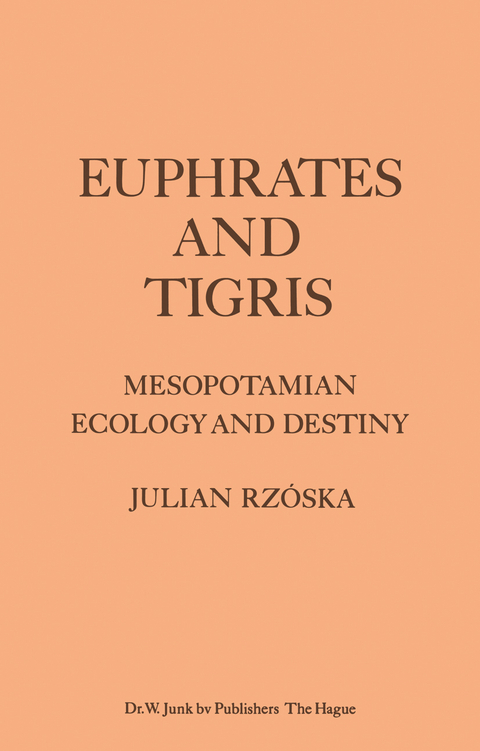
Euphrates and Tigris, Mesopotamian Ecology and Destiny
Seiten
2011
|
Softcover reprint of the original 1st ed. 1980
Springer (Verlag)
978-94-009-9173-6 (ISBN)
Springer (Verlag)
978-94-009-9173-6 (ISBN)
Scope and limitations of this book I am trying here to present the natural history of a land largely created and dominated by two great rivers, the Euphrates and Tigris. The desire to collate this book arose from a similar motif as in the Nile book (1976), the intricate connection between man and rivers.
Scope and limitations of this book I am trying here to present the natural history of a land largely created and dominated by two great rivers, the Euphrates and Tigris. All rivers have two main functions, quite different from lakes; they transport water and eroded material sometimes over large distances. The astute Greeks, who penetrated here in the 4th century B.C., called the land Mesopotamia, an apt name; it is the only region in the Near East, except Egypt, having the benefit of large rivers. Another name coined in antiquity was 'Fertile Crescent', stretching from Egypt to present day Iraq; Herodotus marvelled at the fertility of the soils, the abundance of water and the magnificent cities of Mesopotamia. Thus a further role of some great rivers is recognized as foci of human development. The desire to collate this book arose from a similar motif as in the Nile book (1976), the intricate connection between man and rivers.
Scope and limitations of this book I am trying here to present the natural history of a land largely created and dominated by two great rivers, the Euphrates and Tigris. All rivers have two main functions, quite different from lakes; they transport water and eroded material sometimes over large distances. The astute Greeks, who penetrated here in the 4th century B.C., called the land Mesopotamia, an apt name; it is the only region in the Near East, except Egypt, having the benefit of large rivers. Another name coined in antiquity was 'Fertile Crescent', stretching from Egypt to present day Iraq; Herodotus marvelled at the fertility of the soils, the abundance of water and the magnificent cities of Mesopotamia. Thus a further role of some great rivers is recognized as foci of human development. The desire to collate this book arose from a similar motif as in the Nile book (1976), the intricate connection between man and rivers.
I. The land and its life.- 1. Panorama of Mesopotamian Iraq.- 2. Response of the living world to present conditions.- 3. Palaeo-ecology.- II. Mesopotamian Waters, Regime and Hydrobiology.- 4. Near East waters as wider background.- 5. Rivers of Mesopotamia as dominating factor.- 6. Water characteristics, by J. F. Tailing.- 6a. Phytoplankton, by J. F. Tailing.- 7. General biology of Iraq waters.- 8. The fishes of the Euphrates and Tigris, by K. E. Banister.- Epilogue.- Summary. Reflections general and personal.- Annexe. The Mesopotamian past as seen by eyewitnesses.- References to chapters 1–5 and 7.- Remark. Chapters 6, 6a and 8 have their own references, as they will be available as reprints..
| Reihe/Serie | Monographiae Biologicae ; 38 |
|---|---|
| Zusatzinfo | 132 p. |
| Verlagsort | Dordrecht |
| Sprache | englisch |
| Maße | 156 x 244 mm |
| Themenwelt | Naturwissenschaften ► Biologie ► Limnologie / Meeresbiologie |
| Naturwissenschaften ► Biologie ► Ökologie / Naturschutz | |
| ISBN-10 | 94-009-9173-8 / 9400991738 |
| ISBN-13 | 978-94-009-9173-6 / 9789400991736 |
| Zustand | Neuware |
| Haben Sie eine Frage zum Produkt? |
Mehr entdecken
aus dem Bereich
aus dem Bereich
Naturerfahrungen zwischen Quelle, See und Wildfluss
Buch | Hardcover (2024)
Verlag Anton Pustet Salzburg
CHF 41,95
Buch | Hardcover (2022)
National Geographic Deutschland (Verlag)
CHF 55,95


